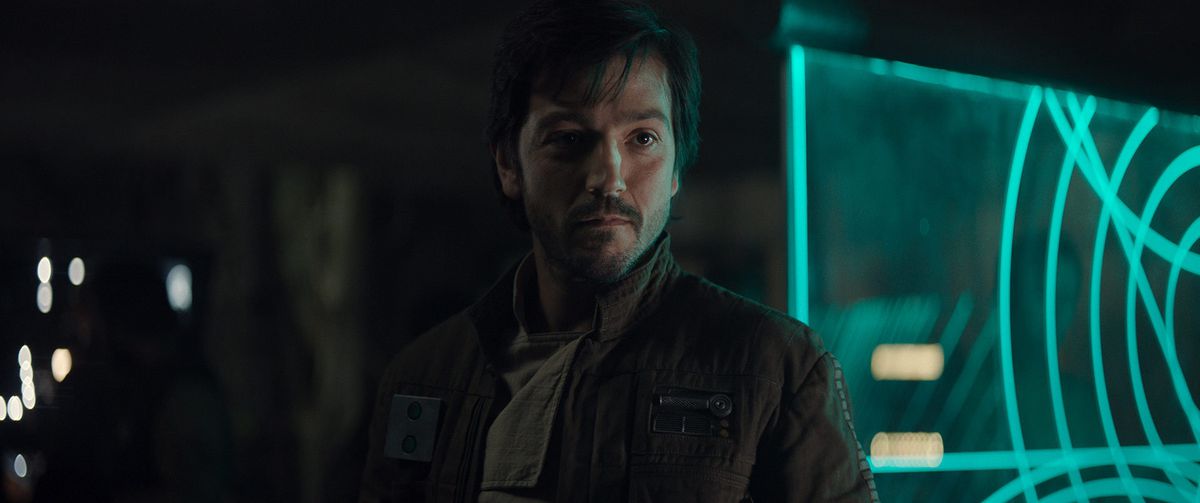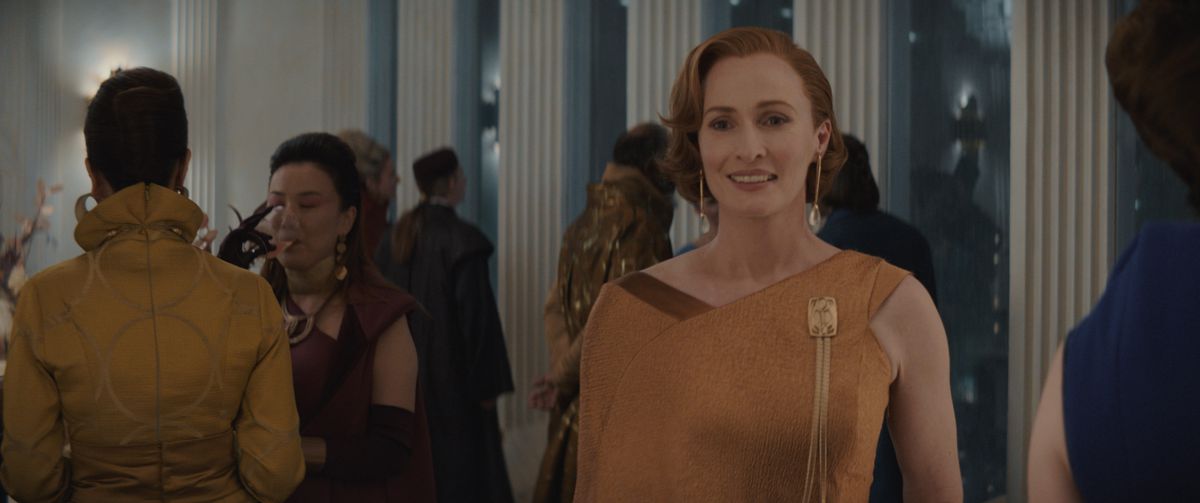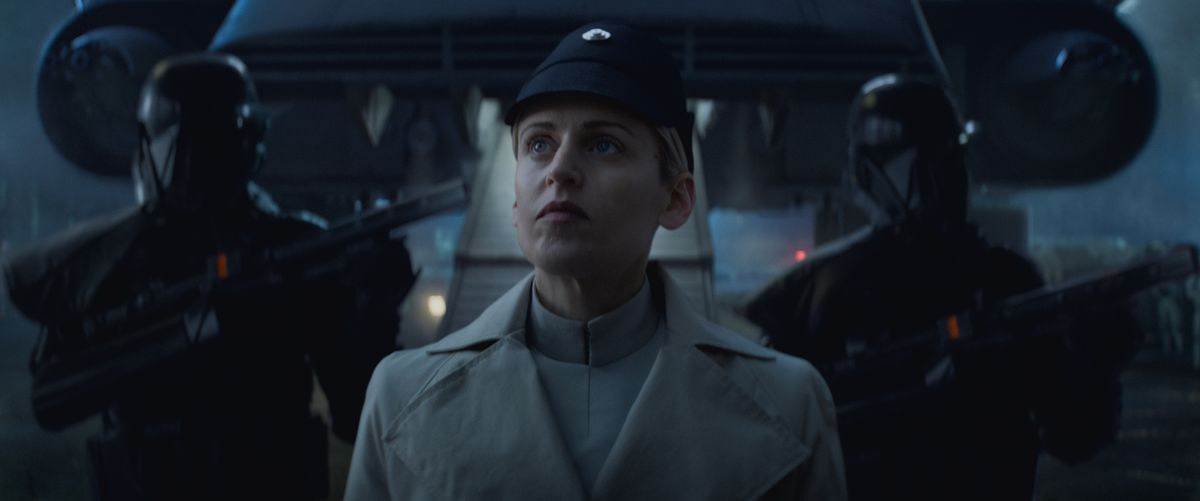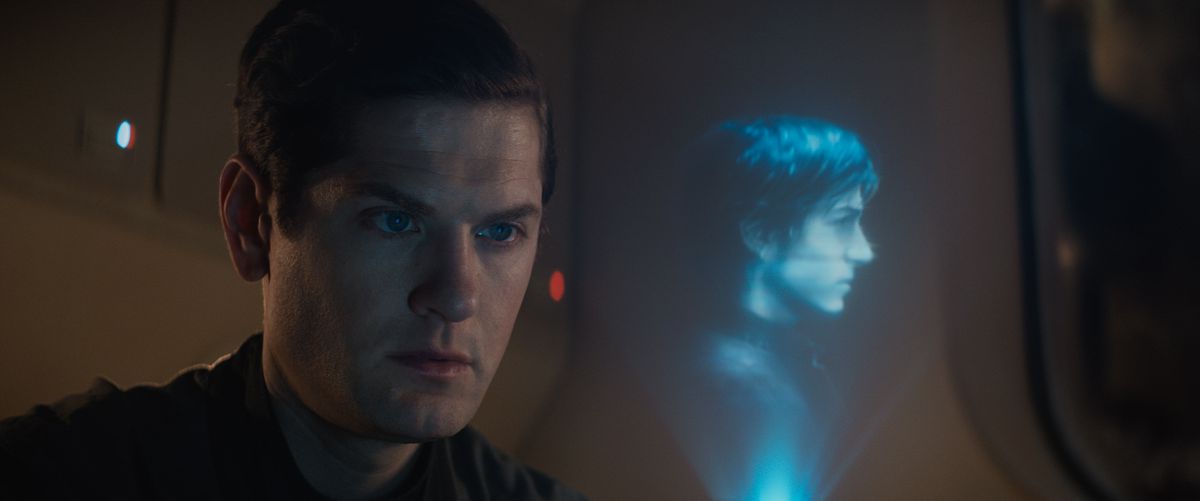For a franchise that lives and dies by its white-knight heroes, Cassian Andor is an odd fit for a solo project. While Rey, Luke, Han, and Obi-Wan struggle with their capacity to do harm, Cassian mentions in his first (and only) film having done terrible things in service of the Rebel Alliance. In the scene we initially meet him during Rogue One, he shoots his informant who can’t make the escape with him. He is relentless and, often, dour. That is exactly why Diego Luna says he wanted to return to the character.
“I don’t think he wants to be a hero,” Luna tells Polygon. “Definitely when we meet him he doesn’t think he’s capable of doing anything important. He’s surviving, he’s a mess. He’s in a very cynical moment where he’s not thinking further than his nose.”
When Andor picks up with Cassian, it is five years before he meets Jyn Erso in Rogue One. Things are almost bleaker for him than they were in the prequel film, which ends with his death (among many others). In the series, we find him on Ferrix, in the Star Wars equivalent of a blue-collar town on the periphery of the universe as we know it. There are no Jedi around, the Empire is at the apex of its power, and the personal stakes for Cassian have little to do with the battle for the fate of the galaxy. As Luna puts it: “This is the moment when he’s the furthest he can be from the guy we meet [in Rogue One].”
Photo: Des Willie/Lucasfilm

Photo: Disney/Lucasfilm
But Andor shares Rogue One’s sensibility for keeping a keen, ground-level eye on how the huge stakes and battles of the Star Wars universe come together. With Tony Gilroy once again helming Cassian’s story (he wrote both Rogue One and Andor and is an executive producer on the series), there’s a real focus on how the big swells of the galaxy feel at a local level.
“The idea that we can do a story that takes him literally from his childhood origins, and walk him through a five-year history of an odyssey that takes him to that place — during a revolution, during a moment in history where huge events are happening and real people are being crushed by it,” Gilroy said at an Andor press conference in August. “The fact that we could follow somebody as an example of a revolution all the way to the end […] that was the buy-in for me, the opportunity to do that.”
Gilroy’s hope is to extend that journey’s granularity to the people and movements Cassian’s life touches during the show. Once Cassian’s life intersects with the Rebel Alliance, it’s from a much different vantage point than fans of the movies are accustomed to, depicted through segmented clusters and subterfuge. Mon Mothma is still there to keep the fight going, but she’s under considerably different circumstances than we’ve ever seen her.
“We’ve met Mon Mothma before in different iterations, different versions of the Star Wars storytelling. And each time we’ve met her, we’ve met this very composed, regal, dignified woman,” Genevieve O’Reilly, who plays Mon Mothma, said at a press conference for the show. “[Here], she is still that very dignified senator. But for the first time we get to see the woman behind the role. We get to see a private face of Mon Mothma; we get to flesh out not just the senator, not just the would-be leader of the Rebel Alliance, but also the woman.”

Image: Disney/LucasFilm

Image: Lucasfilm

Image: Lucasfilm
Mon Mothma is just beginning her defiance and eventual rebellion against the system she’s worked within for years. It’s a different point of view than we see in many Star Wars stories, and it’s not the only one: Andor takes a distinct look at our antagonists as well.
In the show’s first few episodes, we’re introduced to two faces of the Dark Side much lower on the ladder than we’ve met before: There’s Dedra Meero (Denise Gough), an ambitious and meticulous Imperial Security Bureau officer who hopes to climb the ranks of the Empire. Then there’s Syril Karn (Kyle Soller), the enforcer for a local company with significant power in Cassian’s town. Their stories are the kind of subtle ones Star Wars thrives on — two people who are the heroes of their own story, and whose longing for power promises darker things.
“Having a character who wasn’t really sure about himself was what kind of made him the most fun to play,” Soller said of Syril. “He could kind of go either way — he could go into the Empire, he could go into the Rebel Alliance. He’s got a lot of gray area. And he came from a place of such lack, and such pain in his home life. He’s trying to fill this void within himself through the fascist corporate bureaucratic structure where he finds order and he finds a place to be seen if he can supersede his station.”
That kind of ambiguity is not always what Star Wars fans have gravitated toward. But with every new prequel promising to dig deeper, explain everything, and retain its connections to the movies you love while building something new, few feel as thoughtful as Andor. Perhaps it’s no surprise the show with the dauntless task of picking up the bleakest Star Wars story and taking it even further into its depths would have to actually put its money where its mouth is. But in its first four episodes, Andor seems incredibly trusting of its viewer. This is not a Star Wars where heroes roam, or a Star Wars that shows you how the day was saved. It’s not a story about what happens in the Star Wars universe so much as it is about how it happens.
As such, it’d be foolish to go into Andor and expect Cassian Andor to be the shining white knight of the rebellion. If all goes according to plan — Tony Gilroy’s, Disney’s, and beyond — we’ll come to truly understand what he means when he stares soulfully at Jyn Erso and says he’s been in this fight doing terrible things since he was 6 years old. But even if it’s not lightness and jokes, and even with the Empire occupying the high ground throughout the run of the series, Luna sees the story as an instructive one for our times — and maybe even a bit hopeful.
“It’s a different approach. It’s still about change, it’s still about freedom, it’s still about justice. But it’s a different approach. It’s the most grounded Star Wars you can get,” Luna says. “I think [Cassian’s] process is going to be more about learning what a community can do. It’s a different thing, you know? This is a story about people — regular people understanding what they’re capable of if they articulate things in community, if they articulate actions in community.”
Andor premieres with three episodes on Sept. 21. New episodes drop every Wednesday.

